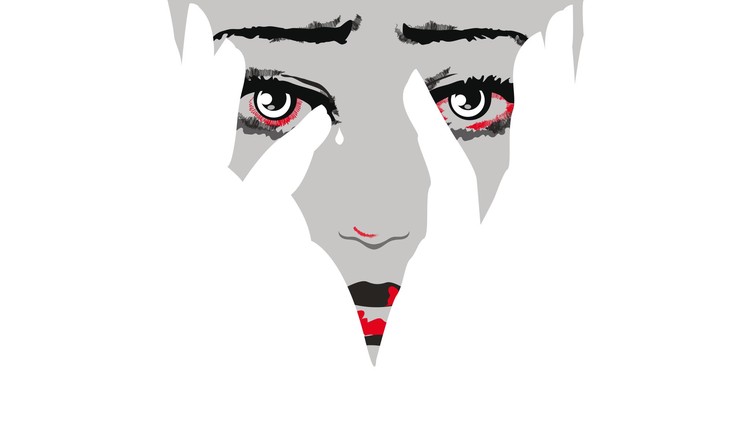When people are “mad,” they are often insisting that certain things are so, and frequently seem unwilling or incapable of appreciating or learning from other perspectives. Yet when the supposedly “sane” mental health system approaches those who are mad, it typically does the same thing – it insists that its own view of what’s going on is correct, and seems incapable of appreciating or learning from others, whether they be the patient, the family, former users of services, or anyone who understands madness in a different way.
So what’s going on with that?
One way of understanding it is to reflect on the very human tendency to narrow one’s perspective when feeling threatened. When people feel threatened, they tend to narrow their focus down to what they believe may avert the threat, and to shut out other perspectives that seem “wrong,” or that could lead to doom.
That works fine when the threat is relatively straightforward, and a solution can be arrived at which reduces the sense of threat.
But what about when it can’t?
When individuals are facing situations where there seems to be a dire need to solve a problem, yet no solution nor path toward such a solution is apparent, the person naturally enters into a state of conflict. On the one hand there is above mentioned drive to narrow attention in response to the threat, but on the other hand, there is a drive to expand awareness and experiment with unusual ways of looking at things, so as to possibly find a pathway to a solution that otherwise appears impossible.
It may be that it is the collision between the two tendencies, the narrowing of attention to focus on threat, contrasting and conflicting with the expansion of awareness while seeking to control what otherwise appears uncontrollable, that is responsible for the wild states we call psychosis, or madness.
So we see people who seem creative in some ways, often coming up with very imaginative interpretations of reality, yet who also seem very unimaginative and closed minded when it comes to seeing any down side in their point of view or being able to follow how and why others see things differently, or seeing how to negotiate in a world where others do see things so differently.
Those who are “mad” can then seem difficult to communicate with – their attention seems narrowed and entrenched in their point of view. We might say they are stuck in “monological thinking” and have difficulty with dialogue, with really appreciating and reflecting on the views of others and learning from them.
Unfortunately, these difficulties can be so intense that those around the “mad” person typically enter into their own kind of threat response, and narrow their own attention, and become stuck in their own “monological thinking” in an attempt to cope.
In the monologue of the traditional mental health system, a “solution” for the problem of madness is outlined. The mad person is simply experiencing an illness, one that has a name and a clear treatment plan, organized around attempts to suppress that “illness.”
The great thing about having this sense of a “clear path forward” is that it helps professionals and those around the mad person not feel mad themselves. That is, rather than feel there is a problem that urgently needs solved yet for which there is no identified path forward (the bind that could lead to madness), it is now possible to feel there definitely is a path forward – just narrow down one’s thinking and doing to the medical style approach, and no doubt or further reflection or inner conflict is required!
But now we really have two clashing and very imperfect monologues – that of the “mad “person, and that of the mental health system and those persuaded by it. And what happens when two fixed views confront each other? Research shows the tendency is for people who feel confronted to dig in and get more entrenched in their views – and the possibility of dialogue, of reaching across the divide, and of healing, becomes more remote.
But fortunately, there are better approaches! They are less simple, and involve deliberately accepting uncertainty, and taking some risks, while also attending to safety concerns. These methods emphasize dialogue, and fight back against that tendency for narrow thinking in response to threat. Instead they embody a wisdom that recognizes we all best face complex issues when we are willing to be wide and open enough to hear all the voices, and that “sanity” is most likely to emerge through this sort of dialogical process, when it takes place not just within the “mad” person but also within the social network and treatment team.
The Hearing Voices Network makes really important strides in this direction – emphasizing for example changing relationships with voices rather than defining them as illness or suppressing them. There are now some forms of psychological therapy for “psychosis,” such as the style of CBT for psychosis that I teach (online as well as live) which emphasize relating in a dialogical way. But it is Open Dialogue, and the dialogical practices it has inspired, which have uniquely framed mental health work as being fundamentally about encouraging dialogue, and which often achieve amazing results just by aiming to support dialogue on all levels.
I was inspired to write about this now because I have been publicizing an “online meeting” or webinar with Mary Olson, titled “Introduction to Dialogic Practice.” This meeting has already happened, but you can listen to a recorded version of it at this link. (It may take a couple minutes to get started, so be patient!)
Dialogic Practice emphasizes listening and responding to the whole person in a context – rather than simply treating his or her symptoms. In psychiatric settings, this is accomplished primarily through a treatment meeting, or Open Dialogue. Arising from the influence of the philosophical writings of Mikhail Bakhtin on systemic family therapy, Dialogic Practice can also be effectively applied to more ordinary couple, group, and family therapy, as well as community work in schools.
This conversation, or dialogue, is not “about” the person, but is instead a way of “being with” the person and living through the situation together. Referred to as “Withness Practices” by Tom Anderson, M.D., this process mitigates the sense of isolation and distance that a crisis can produce and gives the person at the center of the dialogue greater voice and agency. Ultimately, this allows them to participate more meaningfully in both the conversation and the resulting decisions about their own lives.
After eliciting the person’s point of view at the meeting outset, there is typically a back-and-forth exchange between this person and the therapists both to develop a more lucid way of expressing the situation and to create a shared language. The voice of each participant is then woven into this conversation to create a new fabric of meaning and engagement to which everyone contributes.
In this recorded meeting/webinar, Mary Olson helps us understand more about what Dialogic Practice is and isn’t, what it requires, and what it looks like in action. (Those interested in learning Dialogic Practice in some depth might consider attending the Introductory Intensive in Dialogic Practice which happens May 25-29 2016 in NYC.)
Mary Olson, PhD is an internationally-recognized leader in the development of Dialogic Practice. She is the founder of the Institute for Dialogic Practice in Haydenville, MA and is a faculty member of both UMass Medical School and the Smith College School for Social Work. She has written numerous articles and book chapters on Dialogic Practice, including “The Key Elements of Dialogic Practice in Open Dialogue” (2014, with Jaakko Seikkula & Doug Ziedonis), and maintains a private practice in Western Massachusetts.
Again, this meeting has already happened, but you can listen to a recorded version of it at this link. (It may take a couple minutes to get started, so be patient!)



